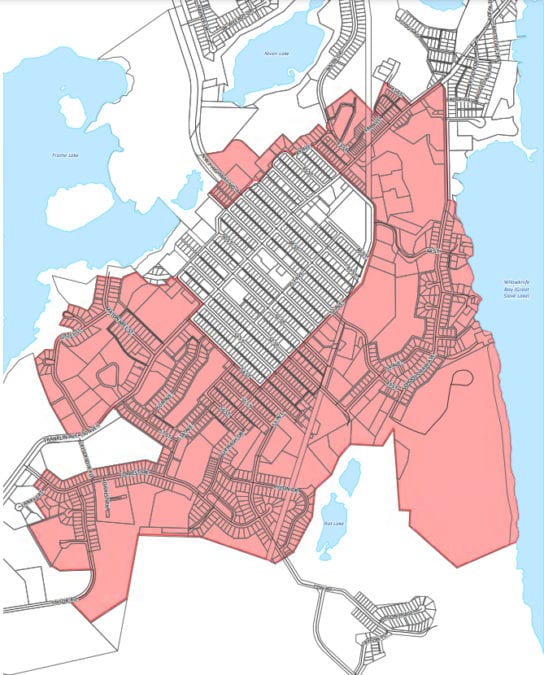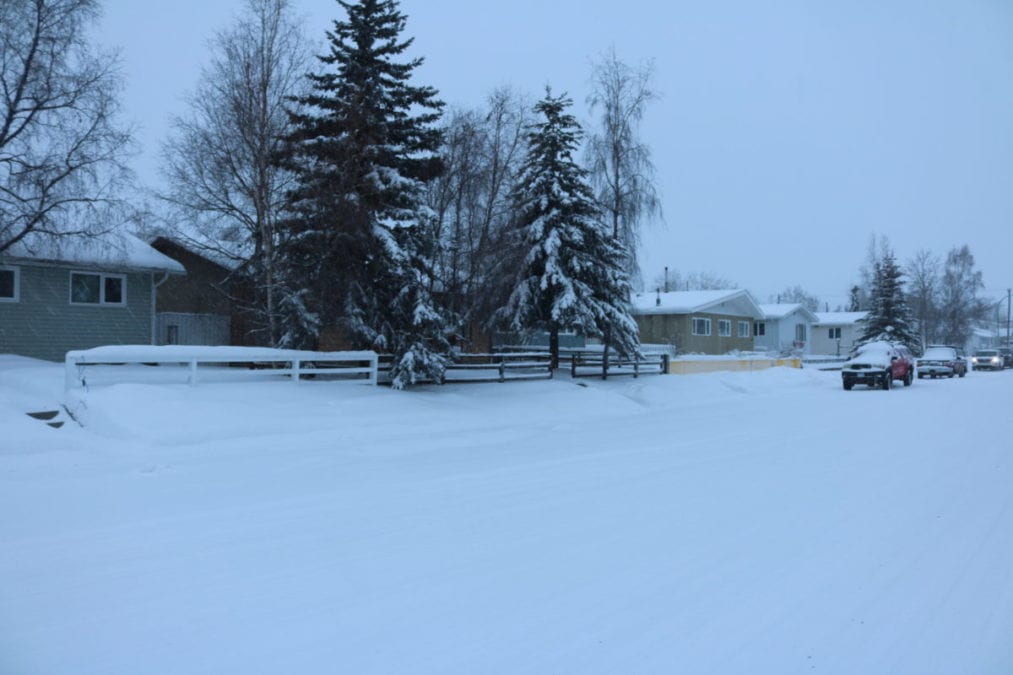Residents from Yellowknife's central residential area are among those expressing concern over profound changes that could result from a new draft zoning bylaw set to reach council next month.

image courtesy of the City of Yellowknife
The potential for large-scale changes to neighbourhoods is sounding alarm bells for some city dwellers.
NNSL Media received copies of three letters sent to the city by occupants in Yellowknife's core expressing concern about proposed infill and plans to increase population density.
One letter, which came from a resident on 55 Street, cited worries about plans for high-density development and infill in neighbourhoods adjacent to the downtown core as well as the inability for residents to appeal proposals, such as high-rise apartments near family-friendly homes.
"I appreciate the idea of infilling and generally support seeing more high-density housing in the downtown core, but the extent to which the zoning bylaw review pushes this to the periphery of the core is shocking," states the letter.
"The appeal of this area (55 Street) is its family-friendly vibe where everybody is a property owner (with the exception of some military housing on the corner) and takes care of the street. There is a historic character to the street and the modest bungalow housing that many would like to maintain. Existing high-density residential developments nearby, like Sunridge Apartments, has already had negative influences on our safety and security. I would not like to see a similar unit erected on my block."

Simon Whitehouse/NNSL photo
In another letter, a neighbour in the same area objected to a proposed bylaw that could permit four-to-six-storey apartment buildings near private homes when there appear to be empty lots in the downtown core.
"I don't see the current need, at all," the letter states. "There are plenty of under-utilized lots downtown: vacant lots, lots with old/vacant buildings on them (near Nunasi building and the high schools, across from the liquor store, near the Salvation Army and Trail's End, and could we please close the "crack" hotel?!)."
Rob Lok, manager of planning and lands, and Margaret Kralt, project manager with Dillon Consulting, provided an update to council at Mondays governance and priorities committee meeting on their work in creating the new zoning bylaw.
Last September, Lok and Kralt, and Greg Littlefair, director of the planning and development division, introduced the city's process to completely overhaul the city's 12-year-old zoning bylaw.
That presentation was followed by initial efforts to get public feedback regarding the bylaw's development in November and December. During those months, planners sent out an educational zoning bylaw video, had citizens partake in a survey and held workshops with interested residents and parties.
When the draft bylaw is presented to council in late February or early March, there will be a few week period where residents will be able to comment. From there the bylaw will go to council where there will be a statutory public hearing where residents can comment before it is passed.
“The biggest concern we got was from pocket neighborhoods, particularly 50A," Kralt said. "When they reviewed the proposed uses, they were concerned it would bring immediate large change to their established neighborhoods. We heard more than once that people don't think about the zoning bylaw changes until it's too late, and until there's a permit that's been issued and it ends up ultimately in appeal.”
The bylaw will provide specific regulations guided by development priorities laid out in the city's community plan passed last summer. Among those legal requirements will include how land is used, how and where buildings are constructed, yard requirements, parking requirements, design standards, and loading space requirements within the municipality.
'Not in my backyard'
Council has heard that the creation of a new zoning bylaw is aimed to appeal to developers to make it easier for companies to work with city planners.
Since the last zoning bylaw's creation in 2008, the document has seen close to 80 amendments, which has made it difficult for users.
“Obviously the development community and the business community is interested in reducing some of these development costs and some of the red tape associated with that,” Kralt said.
“On the flip side, though, there were people who are very concerned about the character of their established neighborhoods. They like the feel of their neighborhoods, particularly the neighborhoods that are in interesting areas or on the peripheral of the downtown core. They feel like too much flexibility and 'anything goes' could create mayhem in in their communities, and it could change the feel and the look.”
Coun. Niels Konge said the bylaw shouldn't be obstructed by all complainants as some people just don't want to see growth or development in their areas of the city.
"In my experience when most people are engaged in this, it is because there is something happening in their neighbourhood that they don't want and they want to ensure there is never really any progress or growth," said Konge.
"So if we have a whole bunch of people from 50 A or 55th, or Old Town coming and saying, 'Oh, we don't want this or we don't want (that)' Well, that's NIMBYism and I certainly don't want to create a zoning bylaw, where NIMBYism makes it harder to do anything."
Mayor Rebecca Alty said the city has received a lot of comments from the central residential area and agrees there's concern from residents about infill and changes to the character of that neighbourhood.
But she added that now is the time for residents to engage on getting the bylaw right as it is to be in place for another 10 years.
"We really have to take a long-term view with the zoning bylaw and consider whether it will work over the next 10 years," she said, citing the need to address climate change concerns through infill, improve the fiscal reality that residents face and use land responsibly before seeking to sprawl.